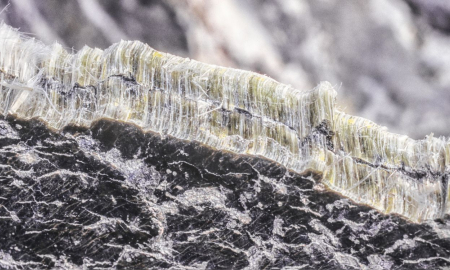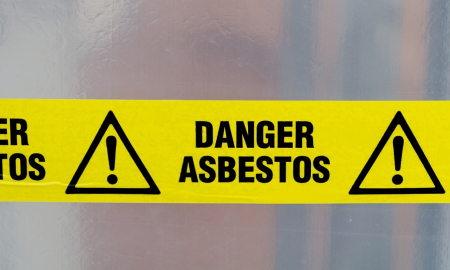Asbestos Mishaps on the Railway and How to Avoid Them
The railway industry was among the first to make extensive use of asbestos and asbestos-containing materials (ACMs), with the fibrous mineral found to be especially useful as insulation for pipes, boilers and fireboxes in steam locomotives.
In this blog, Denis Morgan, divisional technical manager for SOCOTEC’s Asbestos team, discusses how to identify and manage the risks of asbestos exposure in rolling stock built before the UK-wide ban in 1999.
Where was asbestos used in rolling stock?
Asbestos was used extensively in rail vehicles up until the late 1960s, with blue asbestos (crocidolite) being used for insulation, fire protection and soundproofing. While the use of crocidolite ceased in 1967 and a decision was made nine years later to remove all sprayed blue asbestos by December 1987, some vehicles still contain remnants of the fibres in difficult to remove spaces. Any renovation work involving cutting, abrading, and welding must take this into account and a suitable method of working produced.
Despite the crocidolite being replaced by an alternative material – a combination of Colset and fibreglass – industry knowledge indicates that the Colset may possibly contain some white asbestos. What’s more, many of the old rolling stock still contain ACMs incorporated into textiles and arc chutes, the latter of which are used in circuit breakers within all types of electrical equipment to insulate and protect circuits from shorting. This prevented an arc – a high voltage spark – from jumping from one contact to another.
Identifying suspected ACMs
Where a material or component is suspected of containing asbestos, the item must be treated as an ACM until proven otherwise. This will then be identified by a qualified person as an ACM or non ACM, and where appropriate, the type of asbestos will also be determined. There are a range of materials incorporated within rolling stock and related infrastructure that could potentially contain asbestos, with sampling and analysis serving as the definitive way to decipher whether the fibrous mineral is present. Some components are identified as being asbestos-free by stamping or having two ‘v’ notches cut into the material.
Asbestos cement
Asbestos cement was a strong material that was both easy to make and reasonably cheap to produce. It can be moulded into many products and has a useful life of around 50 to 60 years, which is much longer than that of wood and some plastics. This is a reason why most cable troughs were initially made of asbestos cement. As the fibres in asbestos cement products are firmly bound in the material, they will only be released if the product is subjected to mechanical damage via breakage or the use of abrasive tools. Asbestos cement products which are used externally will weather slowly, so the risk of exposure from fibre release is extremely low if the material is left undisturbed.
Ballast
Ballast can often have some asbestos contamination present as a result of material dropping from trains/stations and trackside debris coming into contact with the tracks. When ballast is recycled, an opportunity arises to check the material and remove any contamination prior to it being used after processing. Checks such as air tests and sample analysis are often carried out to ensure that staff are working in a safe environment.
Buildings
Most buildings, such as rail stations and depots, have had management surveys carried out to determine the extent of any ACM that may or may not be present. Where refurbishment or demolition on buildings is planned, more intrusive surveys are required to try and identify all asbestos within the fabric of the building. However, sometimes asbestos might not be located during these surveys as a result of inaccessibility. The implications of this can be quite serious, as shown in the following case study.
Depot case study
The contractor was appointed by the depot to install new steel legs for the installation of high level access platforms, allowing for maintenance work to be carried out with ease at the roof level of carriages. During these works, the contractor/client identified suspected asbestos packers below the concrete slab, which needed to be removed prior to the installation work.
The packers were sampled and analysis identified them as asbestos-insulating board containing amosite. However, this was not identified until the work was halfway through the second platform. As works on the first platform were complete and the slabs had been placed back in-situ, there was significant contamination of the work area, including vehicles.
A significant cost was occurred by the depot for removal of the AIB packers and debris from ledges and pits, as well as beneath timber walkways to the train line. It was also necessary to clean all surfaces and equipment within the areas of the platforms where maintenance work was being carried out. All removal and cleaning work was carried out under controlled conditions by a licensed asbestos removal contractor. It should be noted that the use of asbestos-containing packers is not uncommon and has been found at other depots.
How can SOCOTEC help?
With over 100 years’ experience in the rail industry, SOCOTEC can support rail professionals with a whole range of services, including asbestos management, environmental monitoring, occupational hygiene and lubricant and fluid condition testing.






Add new comment